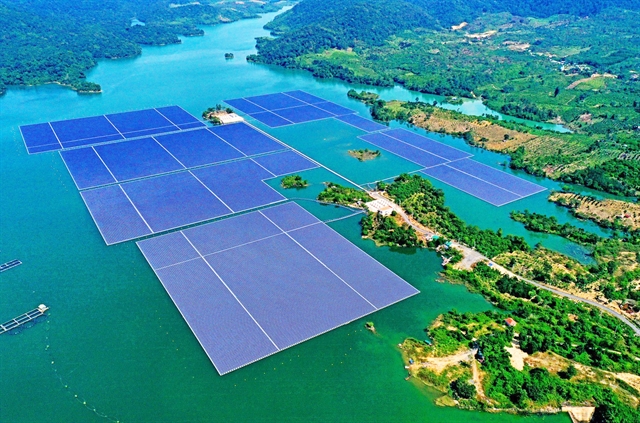 Economy
Economy

Việt Nam needs to speed up its transition to clean, secure and market-based energy by switching to advanced technologies, improving the energy sector’s performance and encouraging private investment, a conference in HCM City on December 23 heard.

|
| Đa Mi Floating Solar PV. Project in Bình Thuận Province. — VNA/VNS Photo Ngọc Hà |
HCM CITY — Việt Nam needs to speed up its transition to clean, secure and market-based energy by switching to advanced technologies, improving the energy sector’s performance and encouraging private investment, a conference heard in HCM City.
Speaking at the 2020 Việt Nam Clean Energy Forum this week, Nguyễn Thái Sơn, head of the scientific council of the Việt Nam Energy magazine, said power demand was growing rapidly and the country would need to shift to “cleaner energy sources” to maintain economic growth and protect the environment.
A number of clean energy projects had been included in the national power development plan for until 2030, including 187 wind power plants with a total capacity of 11,419MW and 135 solar farms with a capacity of 13,617MW, he said.
Another 320 solar power plants with a capacity of 34,000MW and 300 wind plants with a capacity of 74,000MW were under consideration by investors, he said.
However, investors faced challenges like lack of technical standards, policies and administrative procedures related to clean energy projects.
He said the Government should encourage private investment to create energy markets and a transparent environment.
“To attract the private sector, it is vital to ensure equal treatment.”
The Government needed to promulgate policies and mechanisms to promote clean energy development and liberalise the renewable energy market to attract non-public investment, he said.
He said it was also important to have an appropriate power pricing mechanism to attract foreign investment.
Nguyễn Anh Tuấn, director of the Electricity Regulatory Authority of Việt Nam, said the country aimed to become an attractive destination for investment in low-emission energy.
Earlier this year the Government issued a major resolution related to the National Energy Development Strategy for until 2030, paving the way for private investment in power, he said.
As of August, nearly 23,000MW of solar and wind power and about 16,000MW of LNG-fired capacity had been included in the national power plan, he added.
Solar and wind power have seen significant growth in recent years. There are now solar farms with a capacity of more than 5,000MW and wind power plants with 1,000MW capacity. It is expected that 3,000-5,000MW of wind power plants will be added in the next one or two years.
According to the Electricity of Việt Nam HCM City, it is working with the Deutsche Gesellschaft fuer Internationale Zusammenarbeit (GIZ) GmbH to create technical standards for rooftop solar power and submit it to the Ministries of Industry and Trade and Science and Technology for approval.
Challenges
Tuấn said power energy had not been synchronised with the growth of renewable energy, and there were not enough backup sources and storage systems to integrate renewable energy on a large scale.
Regulations governing investment in clean energy remained inconsistent and unclear, causing delays in the investment process, he said.
Land compensation payment and acquisition for clean power projects were tardy, also a big hurdle to project implementation, he noted.
There had been no special policy to attract investment in renewable energy through bidding.
A representative of Trường Thành Group Joint Stock Company called on the Government to issue guidance on technical regulations for offshore wind power projects.
The forum also announced the list of top 10 leading companies in clean energy.
According to the Ministry of Industry and Trade, Việt Nam is set to face a shortage of 6.6 billion kWh next year, 11.8 billion kWh in 2022 and 13 billion kWh in 2023.
It requires an investment of US$130 billion in new power projects by 2030 to make up these shortages.
Power demand is forecast to grow by 8.5 per cent a year for the next five years and 7 per cent between 2026 and 2030.
Experts have said Việt Nam has the potential to develop 8,000MW of hydroelectricity from small plants, 20,000MW of wind energy, 3,000MW of electricity from biomass, and 35,000MW of solar power in the next 10 years. — VNS

|
| Speakers at the 2020 Việt Nam Clean Energy Forum in HCM City. — VNS Photo Bồ Xuân Hiệp |




